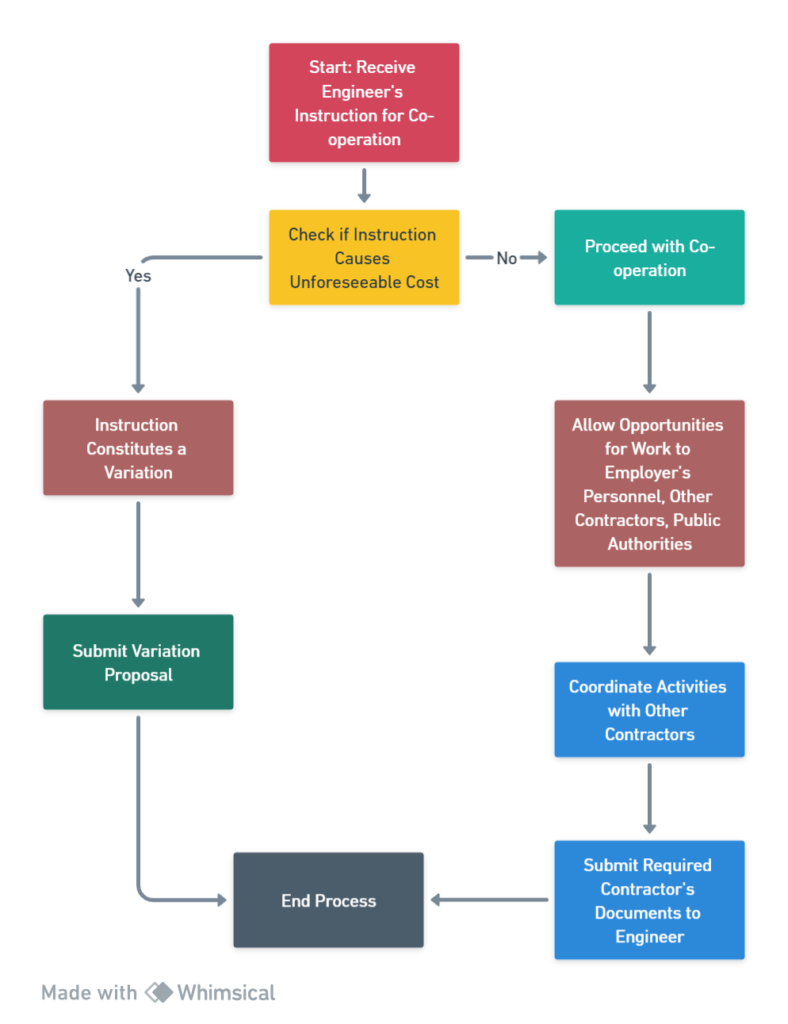Understanding FIDIC Clause 4.6 Co-operation
Diverse Interpretations of Clause 4.6
Purpose
The Purpose of Clause 4.6 Co-operation goes beyond mere administrative instruction; it serves as a contractual foundation for how multiple parties involved in a construction project interact. This clause aims to clarify both the Contractor’s and Employer’s obligations to ensure smooth operations and minimize conflicts.
Implications
The Implications are significant for both the Contractor and Employer. For the Contractor, the clause outlines the need for coordination with other entities and potentially incurring costs. For the Employer, it stipulates the responsibility to ensure co-operation among various parties involved, including bearing certain costs.
Primary Aspects
The Primary Aspects include the Contractor’s obligation to allow opportunities for other parties to work, the Employer’s duty to ensure co-operation under Sub-Clause 2.3(a), and the provision for Variations in case of Unforeseeable Costs.… Read the rest












